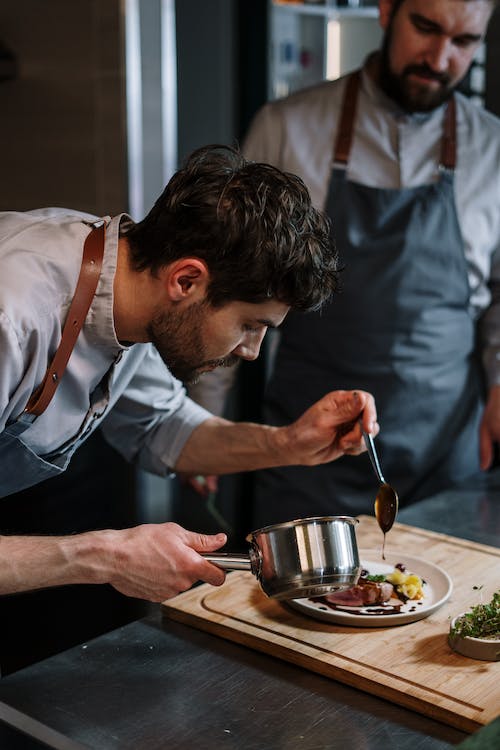Let’s face it, a lot can go wrong while you’re cooking in the kitchen, with overcooking one of the most common issues. Even a fine cut of steak can end up tasting like an old shoe if overcooked!
When cooking with traditional cooking methods, it’s all about temperature and timing. If you take your eyes off what you’re doing in the kitchen, even for a minute, your meal is at risk of being overcooked. Most of us have faced this problem, probably on more than one occasion.
Wouldn’t it be amazing if there was a device that could guarantee we would never overcook a meal again? Even if we left the kitchen for some time and came back and our food was perfectly cooked?
Well, now thanks to sous vide cooking methods, all of this is possible. It probably sounds too good to be true, but top chefs have been using this technique in some of the best kitchens in the world since the 1970s. Over the past few years, sous vide cookers have become very popular devices found in people’s kitchens all around the globe. It helps you make mouth-watering food, without having to worry about overcooking, and without having to stress about the timing. Not only that, but it is an extremely easy method to use!
What exactly is Sous Vide Cooking?
Here is a simple step by step guide on how cooking using sous vide techniques actually work:
- You must seal the food into plastic
- The plastic must then be immersed in hot water
- You then set the temperature on the immersion circulator (this temperature will remain constant)
The immersion circulator is a device that you put in the vessel of water that your ingredients are being cooked in. The circulator helps maintain the exact temperature and helps the water circulate to allow the ingredients to cook evenly.
Because the device constantly maintains a specific temperature throughout the process, guarantees your food is heated at the exact temperature.
Let’s take for example a steak dinner. If you have friends over and they want their steak to be cooked medium-rare. You know how quickly steaks take to cook using traditional methods so if you take your eyes off the frying pan or whatever you’re using to cook for too long, the meal can be destroyed. By using the Sous Vide method you just set the temperature of the water to 130F to cook a medium-rare steak. The temperature will remain at 130F and will not get one degree hotter to make sure you have the perfect steak. All you need to do is sear the steak for about 30 seconds on both sides whenever it’s ready to serve!
Overcooking Meals is a thing of the Past!
Overcooking a meal simply means that the food you want to cook has got too hot. When using sous vide methods, overcooking is actually impossible.
In comparison to other methods of cooking, such as roasting, if you were deciding to roast a steak the oven would need to be set at around 400F to allow the middle of the steak to reach 130F. Air’s conductivity is not very good, so your steak will be heated and eventually be cooked at 130F, however, the inside will be around 160F. If you want a medium-rare steak, I can’t imagine you will be too pleased when the inside of your steak is well done!
What do I need to start using the Sous Vide Method?
To start using this technique the following devices will help you:
- Sous Vide Circulator: This stick looking gadget is the most important to help you use this method properly. There are a wide array of sous vide cookers available, some of which even connect to Bluetooth via your smartphone. If you are considering purchasing a sous vide cooker, click here to compare some of the best cookers on the market. It is possible to vacuum your own food into airtight plastic, put it into a pot of hot water on the stove, and use a candy thermometer to help monitor the heat, however, the process will be time-consuming and there is a high possibility something will go wrong. These devices are designed to be hassle-free.
- Zip locked freezer bags or a vacuum sealer: If available, use a vacuum sealer, as it helps remove the air surrounding the food, allowing the water to easily surround the ingredients. If you don’t have access to a vacuum sealer, a ziplock freezer bag will do the trick.
- A pot or a Dutch oven: A container used to hold the water in is needed. Most people use a pot, although it’s the circulator that helps provide the heat and not the stove. Many people prefer to use a Dutch oven instead because it’s made from cast-iron which is great to help maintain heat so the temperature remains consistent.
All this information and devices might come across as a little complicated, and perhaps overwhelming, but it is simple to use these methods. Bringing gadgets into the kitchen and interfering with traditional methods might be a scary process for some home chefs, but never having to overcook a meal surely is too good an opportunity to miss out on!

